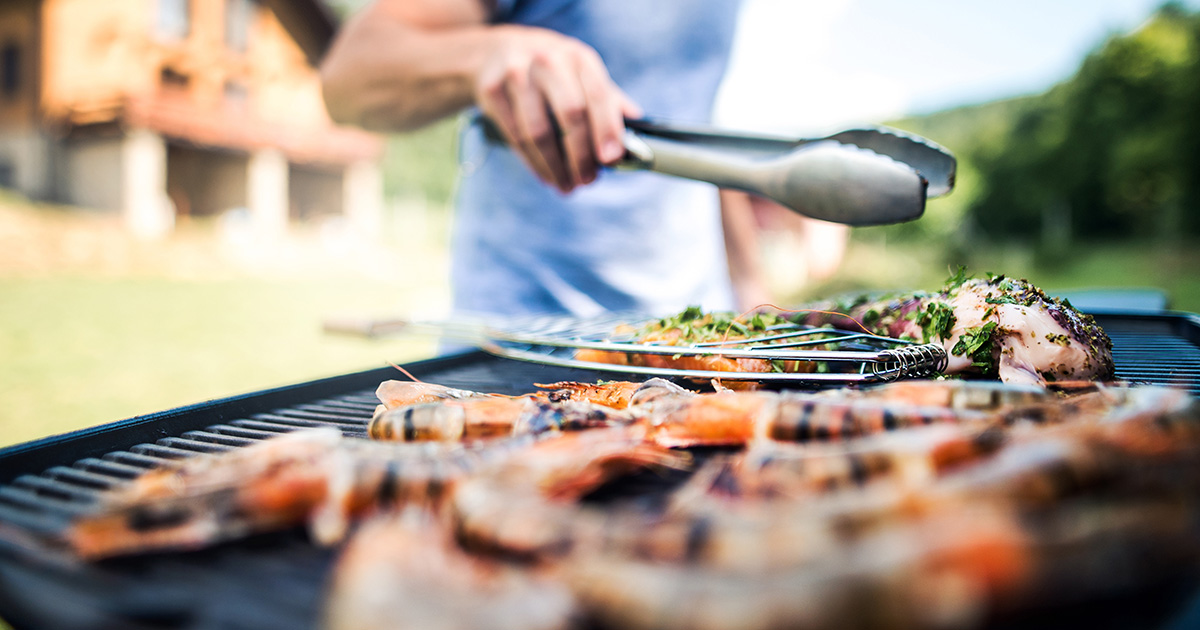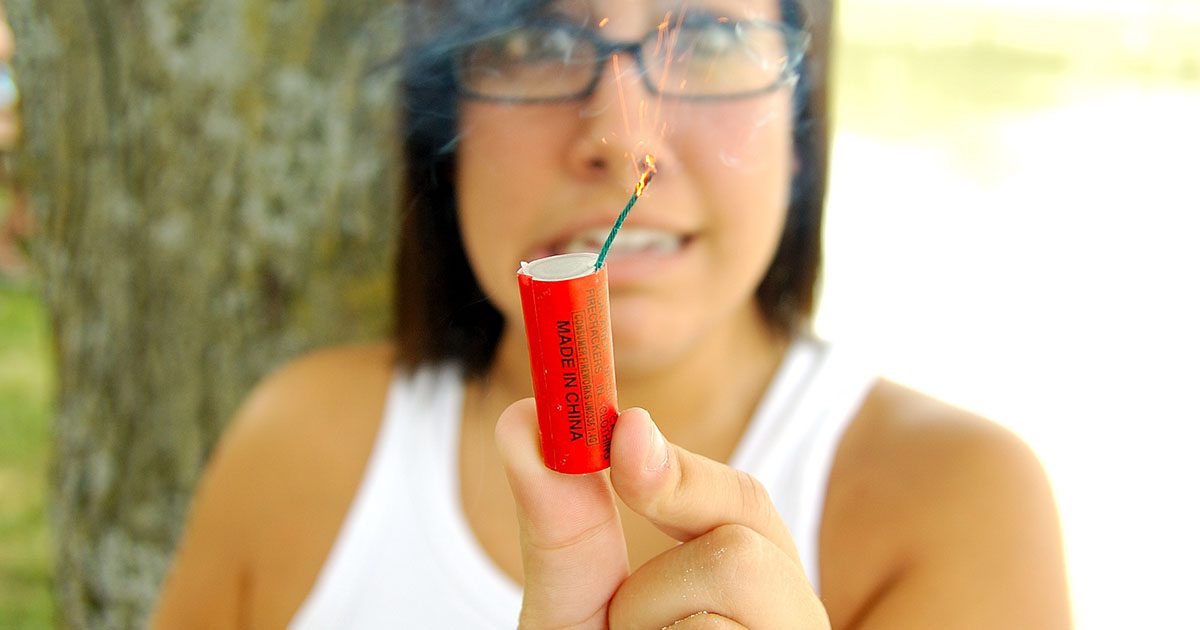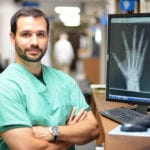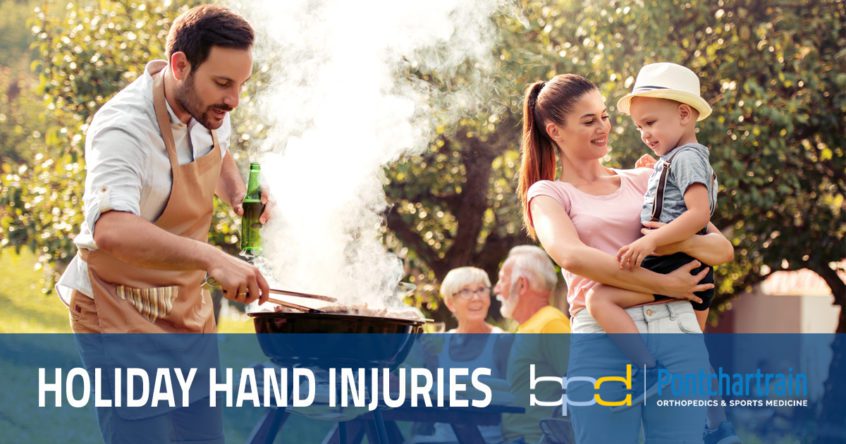
As we gear up for the upcoming holiday weekend, I wanted to take a moment to share a few thoughts about avoidable holiday hand injuries. As I discussed in my blog post on Holiday Hand Safety, every holiday weekend, people sustain serious hand injuries.
Prepare Like a Pro: Cooking, Cutting, and Cleaning
One of the highlights of every holiday weekend is the food! From breaking down chicken for the grill to cutting avocados for your world famous guacamole, hand injuries are all too common in the kitchen. Here are some ways to prepare a safe environment to avoid holiday hand injuries.
Many avoidable holiday hand injuries occur due to our surroundings and the condition of our cooking equipment. Be sure to evaluate your surroundings before you get started. Brandon P. Donnelly, MD
Evaluate your surroundings
Many avoidable holiday hand injuries occur due to our surroundings and the condition of our cooking equipment. Be sure to evaluate your surroundings before you get started. Good lighting will help prevent an accidental cut of the finger. Making sure your cutting surface is dry will prevent ingredients from slipping while chopping or slicing.
Keep your knife handles dry. A wet handle can cause your hand to slip down onto the blade, resulting in a nasty cut. Also, make sure all of your cutting utensils are sharp. A properly sharpened knife will never need to be forced to cut, chop, carve or slice. A knife too dull to cut properly is still sharp enough to cause a serious injury.
Use Proper Techniques
Never cut toward yourself. One slip of the knife can cause a horrific injury. Whether you are slicing ribs or cutting into a watermelon, your free hand should always be placed opposite of the side you are carving toward.
Keep Kids out of the Kitchen
Just like a professional kitchen, always leave the meat, cake, and pie cutting to the adults. Children have not yet developed the dexterity skills necessary to safely handle sharp utensils.
Avocado Hand? It’s a Real Thing!
Believe it or not, people are so often injured by incorrectly cutting avocados that the injury has earned its own name--avocado hand. As I explained in my blog post on avocado hand injury, the injuries range from blade grazes to serious gashes that can damage nerves, muscle and tendons. Using proper tools and technique can help you avoid holiday hand injuries.
Grilling and Chilling? Stay Alert!

The grill is often at the center of every holiday celebration. With family and friends buzzing around, it’s easy to get distracted. With the average grill reaching temperatures around 450°F, one slip can turn a great time into a trip to the ER. Here are a few pointers to minimize your chances against avoidable holiday hand injuries.
Prepare your cooking area
Prepare your equipment by cleaning the grilling racks and grease trap before you get started. Check your propane hoses and tank for leaks. Make sure your grill is on even ground and out of the way of walkways. Once the grill is up to cooking temperature is the wrong time to move it!
Protect yourself and your guests
Potholders, gloves, and long utensils will help protect your hands from flame flare ups and sharp objects such as skewers. Be aware of clothing such as scarves, shirt tails, or apron strings that can catch fire when reaching across the grill.Keep children and pets away from the grill while cooking and also afterwards as the grill can remain hot for over an hour after its use.
Plan how to put out your fire
When the party's over, don’t be tempted to pour water directly on the coals. A sudden burst of steam can cause serious burns. Always have a way to put out a fire other than water - such as baking soda and a fire extinguisher.
Understand different types of burns
Even with the best planning, accidents can happen. But how bad is a bad burn? It’s important to know the signs of a serious burn that will need immediate medical attention. There are three levels, or degrees, of burns - First, second, and third-degree.
First-degree burns
First-degree burns affect only the outer layer of the skin. They cause pain, redness, and swelling. While they are uncomfortable, most first-degree burns can be treated at home.
Second-degree burns
Second-degree burns, also called partial thickness burns, affect both the outer and underlying layer of skin. They cause pain, redness, swelling, and blistering. A second-degree burn should be evaluated by a medical professional as soon as possible.
Third-degree burns
Third-degree burns, or full thickness burns, affect the deep layers of skin. They cause white or blackened, burned skin. Serious damage to the nerves may cause the skin to be numb. A third degree burn merits calling 911 or an immediate trip to the nearest ER.
Fireworks Hand Injuries

For many, the 4th of July and fireworks go hand in hand. Here in Louisiana, fireworks are available on seemingly every street corner. So people mistakenly assume they are safe for anyone to handle. Unfortunately, the most serious, and avoidable holiday hand injuries happen because of fireworks. Injuries to the hand, thumb, or fingers are especially high due to fireworks mishaps. Often, these injuries occur when small children are allowed to handle sparklers and firecrackers.
In my post,on fireworks hand injuries I discuss why a fireworks hand injury doesn’t just hurt, it can be very nasty on a microscopic level. Bacteria and tetanus spores in the paper or cardboard of the exploding device may require a course of systemic antibiotics and appropriate tetanus prevention.
Have a Fantastic 4th of July!
While discussing avoidable holiday hand injuries, it’s important to remember that an ounce of prevention is worth a pound of cure.
If you or someone you know has pain, discomfort, lack of mobility in your hand or has suffered severe burn injuries contact my office today for an appointment. You can get answers from a hand specialist who has the expertise to accurately diagnose and treat your hand condition.
About Dr. Brandon P. Donnelly, MD
 Dr. Brandon P. Donnelly is a board certified hand surgeon with Pontchartrain Orthopedics & Sports Medicine. Dr. Donnelly completed his hand and microsurgery fellowship at the prestigious Philadelphia Hand to Shoulder Center. Dr. Donnelly treats all ages of patients in the greater New Orleans area for hand, wrist, and elbow conditions.
Dr. Brandon P. Donnelly is a board certified hand surgeon with Pontchartrain Orthopedics & Sports Medicine. Dr. Donnelly completed his hand and microsurgery fellowship at the prestigious Philadelphia Hand to Shoulder Center. Dr. Donnelly treats all ages of patients in the greater New Orleans area for hand, wrist, and elbow conditions.
This site is not intended to and does not provide medical advice, professional diagnosis, opinion, treatment or services to you or to any other individual. Through this website and links to other websites, Brandon P. Donnelly, MD provides general information for educational purposes only. The content provided in this website and links, is not a substitute for medical care or treatment. You should not use this information in place of a consultation or the advice of your healthcare provider. Brandon P. Donnelly, MD is not liable or responsible for any advice, course of treatment, diagnosis or any other information, services or product you obtain through this site.

